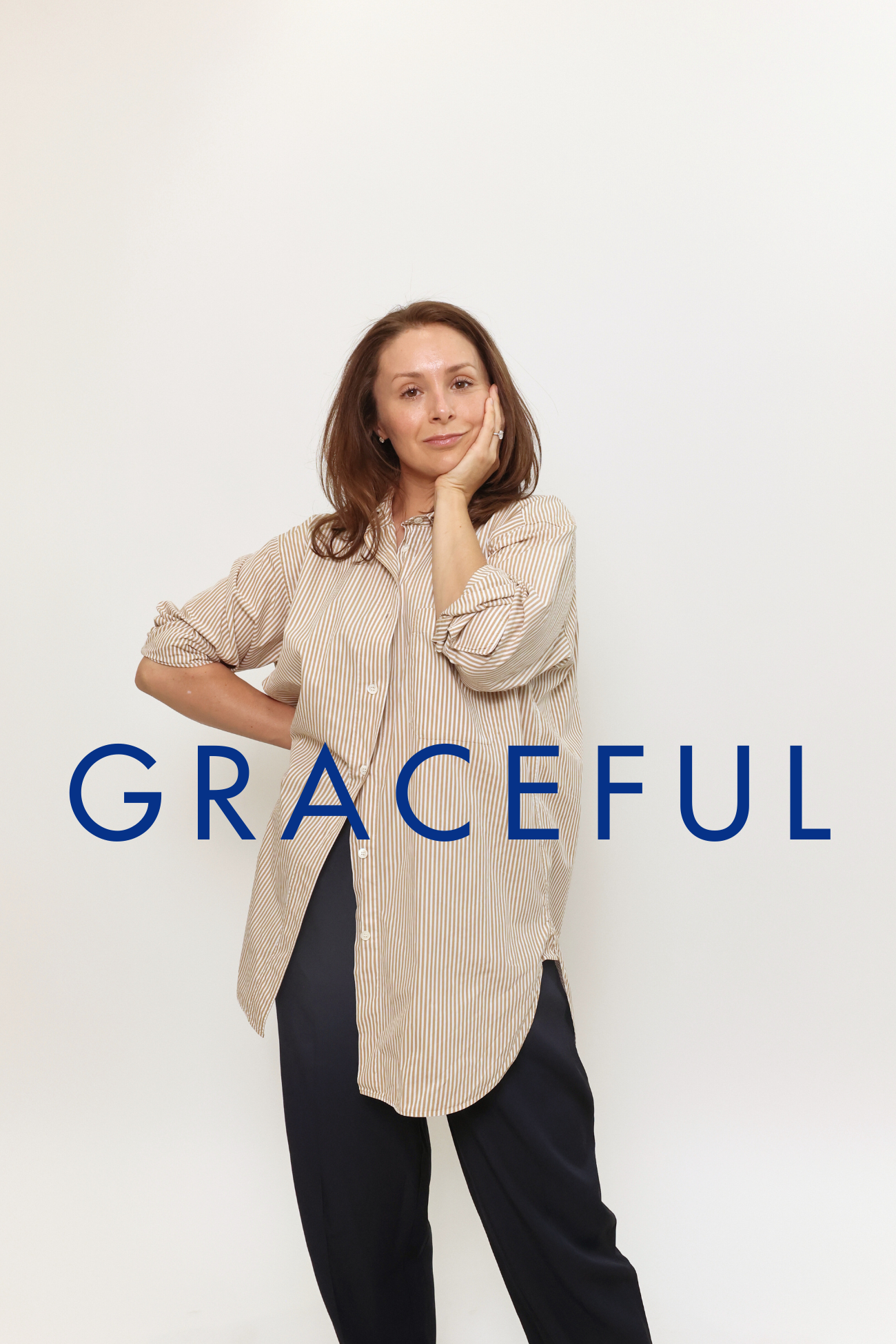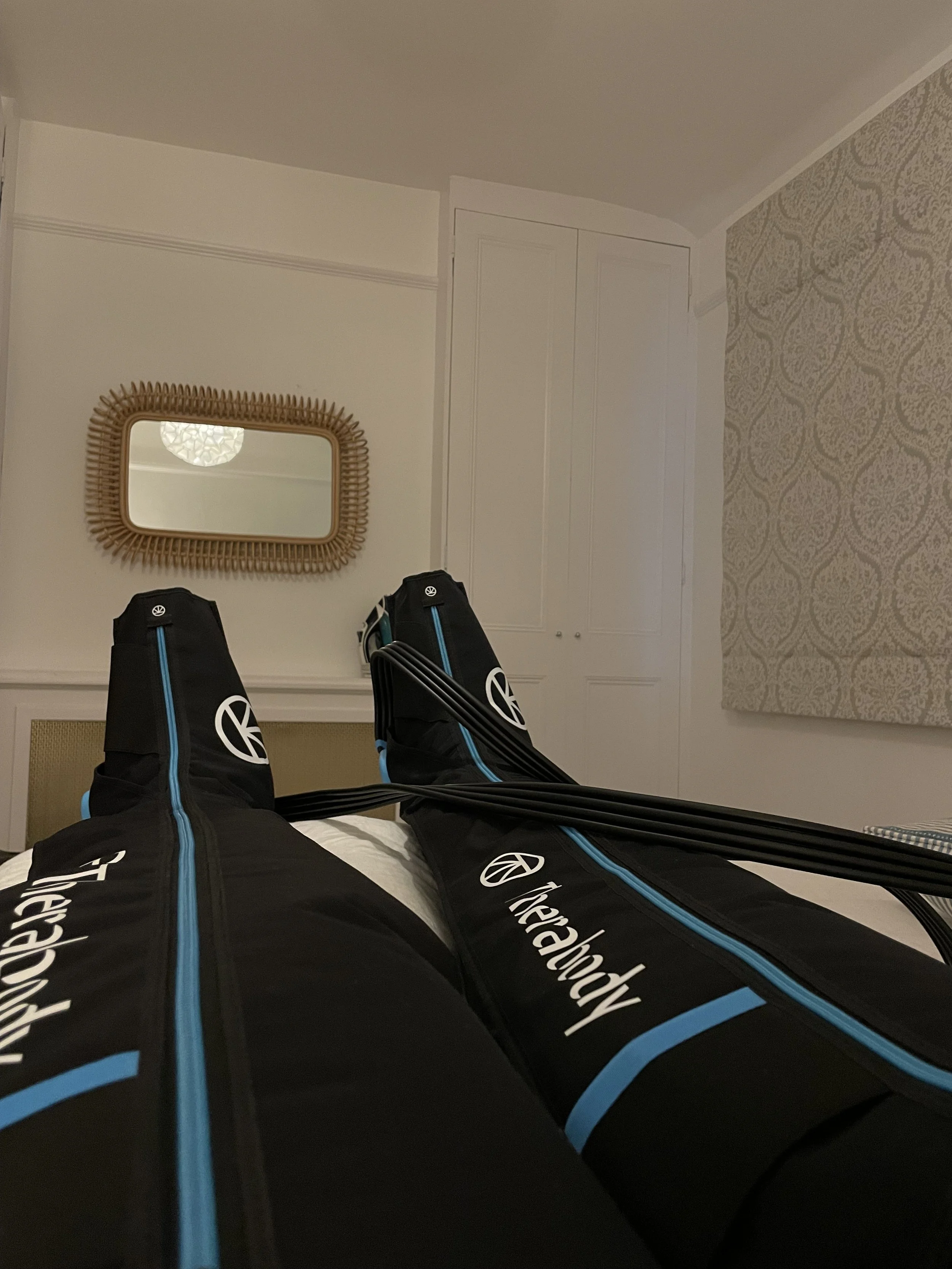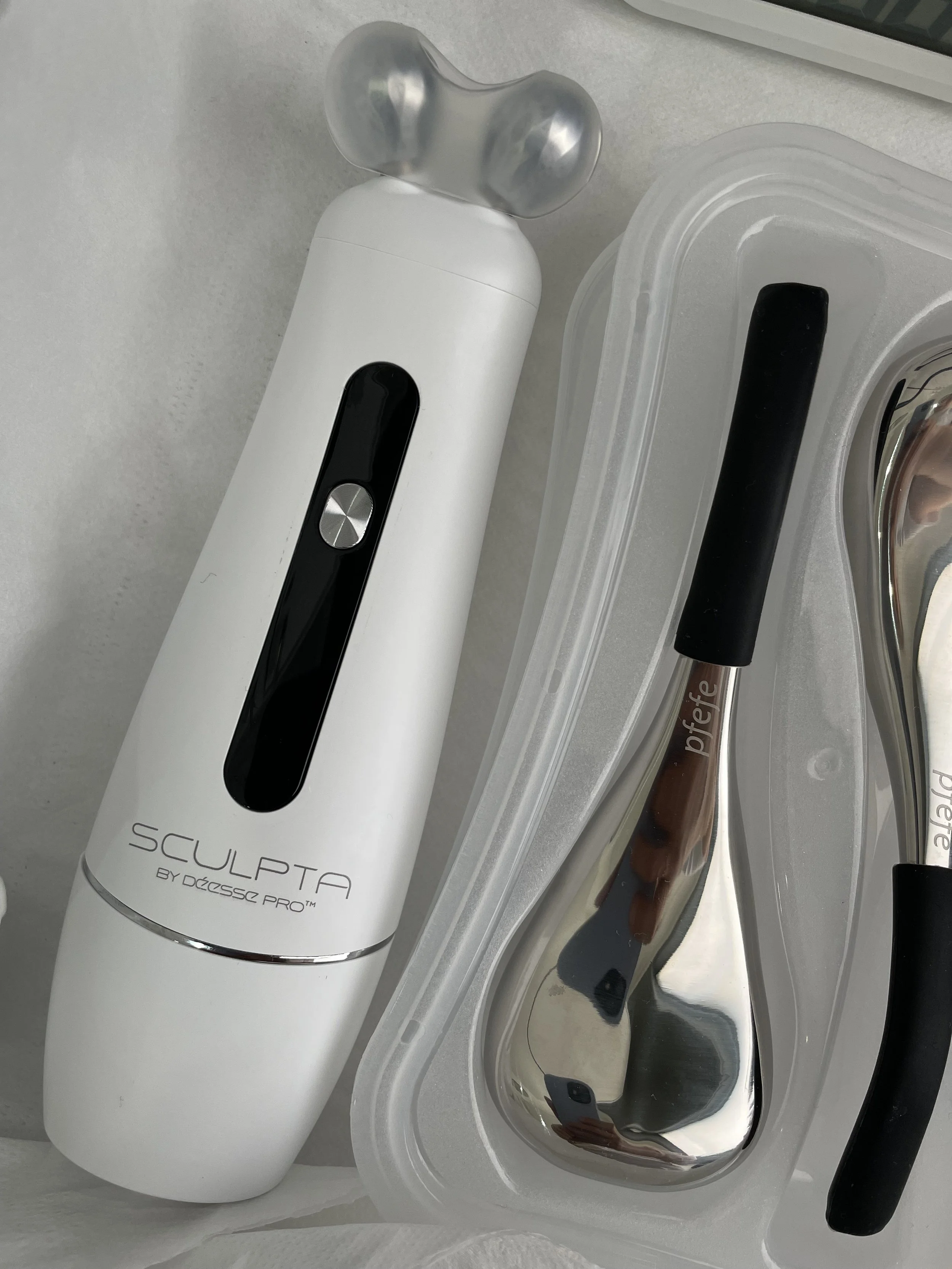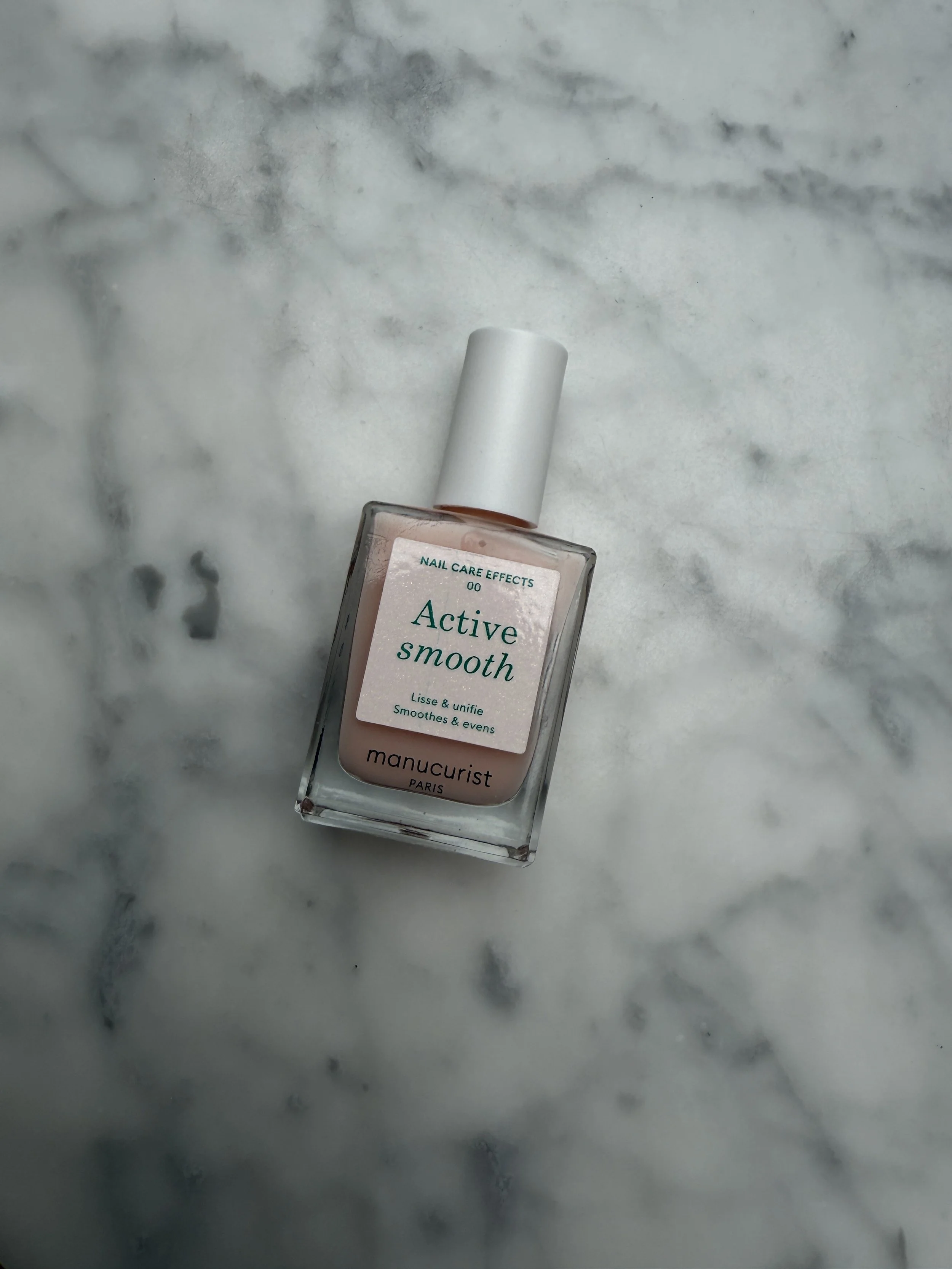Graceful #013 - At Home Skincare Gadgets: Are They Worth It?
Gadgets: Helpful, Hype, or Habit?
We’ve all watched skincare evolve from brightening serums and hydrating creams to a near sci-fi spectacle of glowing masks, handheld wands, and shiny gadgets promising everything from sculpted cheekbones to collagen stimulation. From LED masks glowing in bedrooms to plastic surgeons recommending £4,000+ at-home lasers as part of post-treatment care; these tools have become a modern ritual — part indulgence, part obsession, and part performance-art for online influencers hocking the latest must-have gadgets. For us as consumers they offer us a way to actively ‘do something’ for our skin ourselves, and the promise of being an early adopter - on the cutting edge of beauty technology is appealing.
It’s easy to see the appeal. Many of these gadgets offer a sense of control, efficiency, and the thrill of wielding advanced technology in your own hands — all from the comfort of your sofa. Add in a good Netflix series, and suddenly your evening feels both productive and indulgent. Beyond the ritual, there’s also the economic lure: the idea that one upfront investment in a sleek device could reduce the need for frequent clinic visits or perhaps extend the results of professional treatments. But as with anything that promises too much, it’s worth pausing: are these devices genuinely benefiting your skin, or simply feeding the culture of cosmetic consumption? Let’s discuss.
Why We’re Drawn to At-Home Devices
According to a 2024 Mintel report, sales of at-home skincare devices have nearly tripled in the past five years, with the global market expected to hit $12 billion by 2030. LED masks have us all looking like Marvel villains before bed, microcurrent wands, RF devices — the list keeps growing every day. Beauty has evolved into a space where technology meets ritual, and wielding a gadget can feel like we are biohacking our own faces.
From my perspective as someone who works hands-on with skin, I totally understand this desire to ‘do more’. It’s appealing to think that a few minutes under red light or a light pulse of radiofrequency can help reduce fine lines, dullness, or inflammation in the skin. And, used thoughtfully, they can actually enhance results for many. That said, most home devices won’t match the results of in-clinic treatments. They’re generally safe because they operate at lower temperatures or outputs – but that also means the results are far less dramatic than professional-grade clinical treatments. You simply can’t replicate that at home — they work best as a supplement, not a substitute.
Most Popular Devices — What They Do and Who They’re For (& Not)
LED Therapy
Red, near-infrared, and blue light masks are perhaps the most visible at-home devices today (read my deep dive on LED a few weeks ago here). They target inflammation, mild acne, and dullness, while promoting skin healing and tone. Studies suggest that consistent use — typically three to five sessions per week — is needed for incremental benefits; occasional use will give a temporary glow rather than lasting change. Contraindications (ie. don’t use) include photosensitive conditions and certain medications, so patch-test first and consult a clinician if unsure. Brands include: Omnilux, CurrentBody, Shark BeautyRadiofrequency
At-home RF devices gently heat the skin’s deeper layers to stimulate collagen and improve tissue firmness. These are most suited for maintenance or gentle lifting rather than dramatic in-clinic results based on the output of energy deemed safe for home use. Evidence supports modest improvements in skin elasticity over time, but expectations should be realistic. Avoid use if you have metal implants, pacemakers, or active inflammatory skin conditions and follow recommendations on where and how to use. Brands include: Deesse Pro, Current Body, TripollarNear-Infrared Lasers
Near-infrared light supports collagen formation, microcirculation, and cellular metabolism. Its effectiveness hinges on regular, repeated use, which is often underestimated by us as consumers. Suitable for general ‘anti-ageing’ and skin vitality, but not recommended for anyone who struggles with consistent adherence.
Brands include: LYMA (+ often included in LED masks)Microcurrent Devices
Microcurrent stimulates facial muscles to improve tone, lift, and contour. Technique and positioning are key: improper use can overstimulate the wrong muscles, create asymmetry, or irritate the skin. They’re most effective when combined with consistent skincare and occasional in-clinic treatments using a tailored application of microcurrent.
Brands include: ZIIP, NuFACE, MedicubeOther Common Devices
Ice globes, cryotherapy (cooling devices), and vibrating wands provide immediate soothing, reduce puffiness, and can add ritualistic or immediate, short-term value — ideal for pre-event prep, lowering inflammation in the skin or stress relief. Cleansing gadgets, such as sonic brushes (remember Clarisonic? Thankfully now discontinued), can over-exfoliate and compromise the barrier if used incorrectly or too often (or not cleaned correctly). While mostly low-risk, these devices deliver temporary benefits and are best considered supportive rather than doing anything particularly transformative, and I wouldn’t personally prioritise your skincare budget here.
The Reality Check:
For many, myself included, the shiny gadgets eventually fade into the background — the LED mask is now living in the bedside draw, the microcurrent tool totally forgotten about. And that’s okay. Not every device needs to transform your skin to have value. What they can offer is a sense of ritual, a moment of intention, and a small act of (albeit occasional) care for yourself, which in itself is valuable.
From my experience, the most reliable results come from approaches supported by longer-term studies or consistent clinical evidence: gentle, consistent skincare routines with ingredients like vitamin A, vitamin C, and barrier-supporting moisturisers. Treatments that support lymphatic flow and reduce inflammation. And procedures that can stimulate collagen (like microneedling or radio-frequency when done correctly and consistently). These have been proven to all make a tangible difference over time; think long-game. Devices can compliment these routines and in clinic treatments, but they’re rarely the main driver of results.
A microcurrent device won’t outshine years of targeted facial massage, thoughtful, professionally-led facials, or barrier-first skincare. The real glow comes from patience and knowing how to support your skin’s needs as they evolve over time.
These tools can offer a moment of calm, a little indulgence, and the satisfaction of being proactive with your skin — all worth something, even if the results are subtle. But lasting change? That’s built on consistency of home-care, supportive lifestyle habits & diet, professional care, and nuance, no bluetooth required.
From My Desk This Week:
One product I’m loving: I picked up Manucurist’s Active Smooth polish over the weekend, in light of last week’s chat about the EU gel nail ban. It feels like the perfect compromise — the colour is a chic, understated neutral, fuss-free, and kinder to nails. As a facialist (and mum) whose hands are always in motion, it’s such a relief to have an option that looks polished without compromising on nail health. Easily removed, elegant, and still giving that sense of “done” — a small indulgence that feels luxe and long-wearing without the commitment or hassle of gel removal. Honestly, ditching the gel has been quite liberating.
What I’m reading/listening to: I’m reading The Book of Lymph by Lisa Levitt Gainsley, which focuses on self-lymphatic massage as a tool to optimise overall health. I’ve been pairing it with some recent studies to expand my clinic offerings. Beyond the obvious aesthetic perks — sculpting, depuffing, and improved skin tone — the lymphatic system is an underrated powerhouse for whole-body wellness: it reduces inflammation, supports circulation and digestion, and even impacts stress recovery, with downstream effects on hormone and skin health. It’s a science-led, practical read that cements the idea that lymphatic drainage isn’t just a luxury pre-event treatment — it’s a subtle, effective investment in your health, rippling out to skin, posture, and overall wellbeing. It provides at-home instructions for lots of different self-massage routines, targeting various concerns or certain areas of the body.
In the media: The Ordinary’s recently launched Periodic Fable campaign is cheeky, a little confronting, and exactly the kind of commentary the beauty world needs. It highlights the marketing buzzwords that can mislead us as consumers into buying into a dream with no scientific backing. The video shows students at desks, looking hypnotised (?), re-enacting viral skincare trends dominating social feeds; from the ‘morning shed’ to ice rolling — driving home the need for transparency in the industry. With over half of UK shoppers influenced by the word “luxury,” it’s refreshing to see a brand dissect skincare hype with a bit of wit. Constantly thrown-around words like “medical grade” are interrogated, and it’s a great reminder to approach beauty claims with curiosity, and a critical eye.
The Periodic Fable by The Ordinary - Stills from Youtube
Small shift to try this week: Five minutes of stretching before bed. That’s it. Focus on the hips, shoulders, and spine mobility — particularly if your day has been dominated by a desk or screen. The benefits are subtle but cumulative: tension release, improved lymphatic flow, better digestion, and a sense of calm signalling your body it’s time to rest. I like the posture series by Annabel Luke (Pilates by Bel) for longer, targeted routines, and the GoWOD app is great for keeping you accountable. A tiny nightly ritual that quietly elevates your evening, sleep and your wellbeing.
As always, I hope this helps us all navigate some popularised topics around ageing with intention and ease. I’d love to hear your questions or any topics you’d like me to break down in future newsletters, just reply to this email.
With grace,
Charlie x
PS: Please forward this email on to anyone you think might find it insightful. They can sign up here, and read past issues here.








